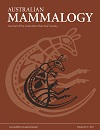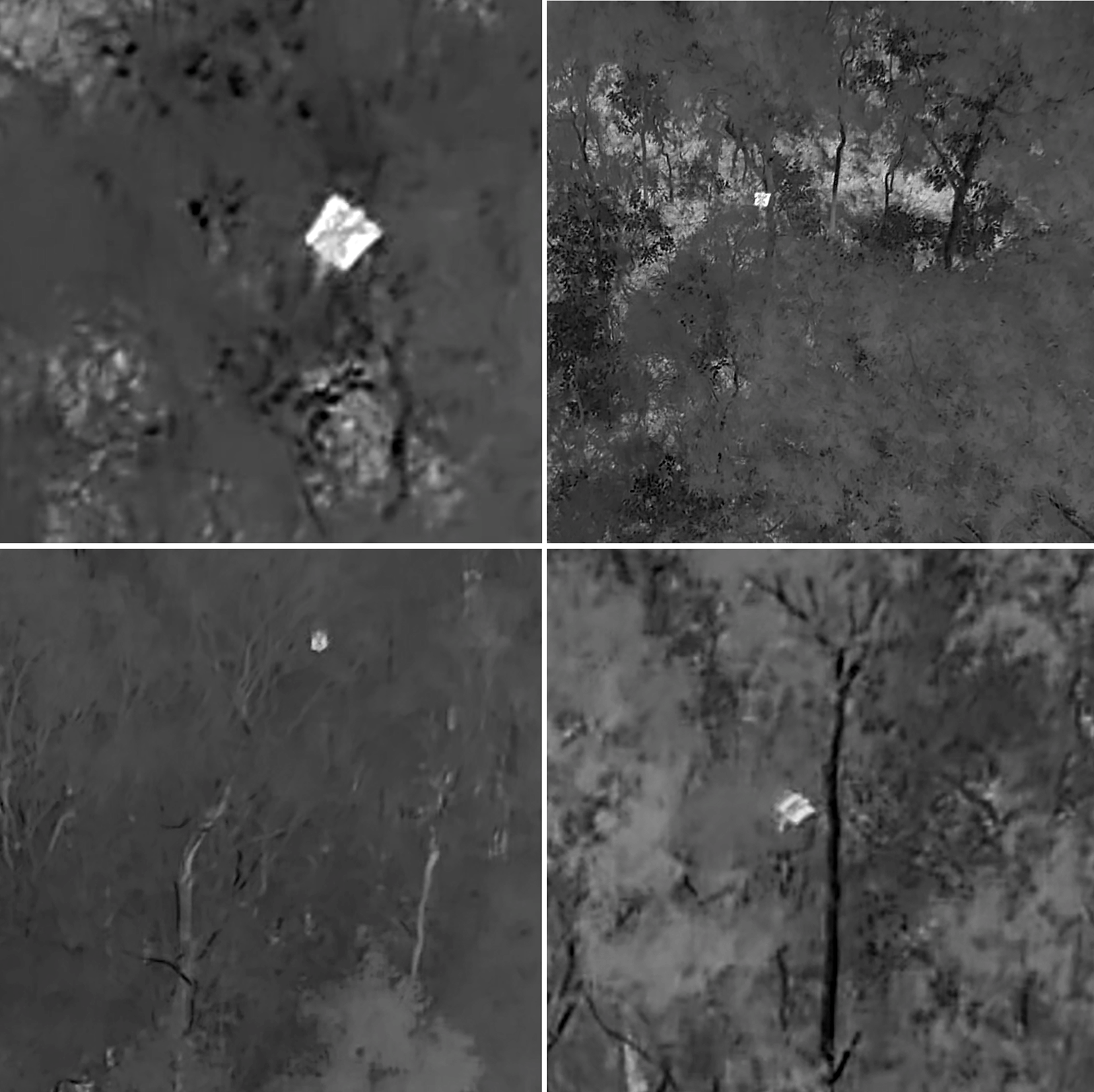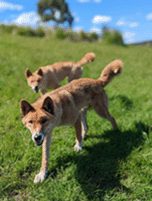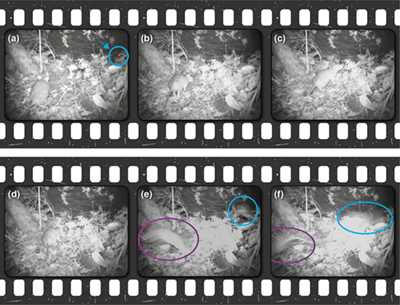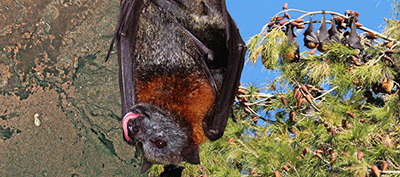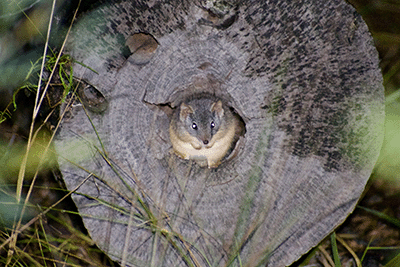AM25029Feasibility of nocturnal thermal drone surveys for detecting endangered mahogany gliders (Petaurus gracilis) in tropical lowland woodlands
Detecting nocturnal, canopy-dwelling mammals can be difficult when using conventional survey methods like spotlighting or camera traps. In this single-night feasibility study, we tested the use of thermal drones to detect endangered mahogany gliders in north Queensland, Australia. The method was highly effective under specific flight conditions, detecting six gliders in less than 2 h without eliciting a disturbance response. These findings suggest thermal drones can rapidly and non-invasively confirm glider presence, but further validation is needed. Thermal video stills by Emmeline Norris
AM25029 Abstract | AM25029 Full Text | AM25029PDF (6.1 MB) | AM25029Supplementary Material (172 KB) Open Access Article


